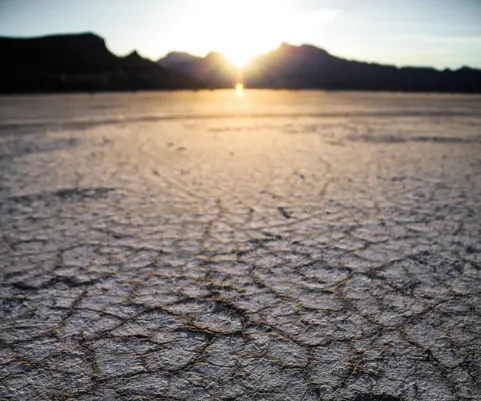
Heat, wildfires among top threats to human health from changing climate
Heatwaves and wildfires are having significant impacts on global human health.
Rising temperatures, the clearest signal of climate change, poses the greatest threat to the human population. The latest report from The Lancet Countdown on health and climate change lays out a long list of interconnections between the two, emphasizing the urgency to cut greenhouse gas emissions and reduce the cost to human health of a variety of climate change-related phenomenon.
The report details how extreme weather events, such as heatwaves and wildfires, are some of the most concerning impacts and how some populations like children, the elderly, nd outdoor workers are more vulnerable than others.
HEAT IS ON THE RISE AND AFFECTING MANY AROUND THE WORLD
Heatwaves are becoming more frequent, more intense, and longer in duration. A child born today will experience a world that is more than 4°C warmer than the pre-industrial average, and climate change impacts on human health are detectable from infancy and adolescence to adulthood and old age.
Today we have a clear understanding of how these heatwaves affect humans, which has led to increasing concern for certain age groups. Among young children, excess heat can cause electrolyte imbalance, respiratory and kidney disease as well as fever.
The elderly population is also at risk in all five continents, especially in some regions of the Western Pacific. Pre-existing conditions like diabetes, cardiovascular, respiratory and renal disease increase health risks from extreme heat for this population group and vulnerability to heat has gone up by more than 10 per cent since 1990 in Southeast Asia and Africa.
In Europe and the eastern Mediterranean, vulnerability to heat has also increased considerably due to its ageing population. In 2018, a record 220 million heatwave exposures affecting older populations was observed globally, compared to 209 million in 2015.

Change in the number of heatwave exposure events (millions per year) over time. Credit: The Lancet Countdown
Heatwaves are also hindering people’s ability to work around the world. In 2018 alone, 45 billion additional potential work hours were lost due to increasing heat as compared to the year 2000.
Although tagged as a labour problem, it can also lead to an increase in health-related issues. Heat exhaustion or heat stroke can occur frequently when workers are overexposed to extreme heat conditions, which is why agriculture accounts for a large portion of the lost work hours due to extreme heat, while industry or services account for less of an increase.

Work hours lost (in billions) over time. Credit: The Lancet Countdown
INCREASING WILDFIRES ARE ALSO AFFECTING THE HEALTH OF MILLIONS
A direct consequence of rising temperatures and drier weather conditions is the occurrence of severe wildfires. Global wildfire data shows that their expansion has actually dropped since 2003, which is mainly due to the fact that population growth and development in grasslands and savanna areas have increased. Despite this reduction, wildfires today are becoming more intense as environmental and weather conditions become more favourable for extreme scenarios.
According to NASA, Africa is the “fire continent.” On an average day in August, of the 10,000 active fires detected by satellites around the globe, 70 per cent are in Africa. There are also clear seasonal trends linked to some of the ongoing fires, but also longer trends related to the expansion of agriculture into tropical forests of south and central America and Southeast Asia.
North America and Europe have also experienced an increase in wildfire activity, but experts believe those have a more direct connection with climate change. In 2019, Alberta experienced its second-worst wildfire season on record and saw approximately 884,000 hectares burned -- an area that is ten times the size of Calgary.
Mike Flannigan, professor of Wildland Fire at the University of Alberta, says the area burned in Canada by wildfires each year has doubled since the 1970s and this is the result of human-caused climate change.
"I can't be any more clearer than that, it is human-caused climate change and this is not normal, it is a new reality," says Flannigan.

The amount of people exposed to wildfire in 2018. Credit: The Lancet Countdown
With wildfires increasing in intensity across the world, more families are threatened by adverse unhealthy conditions. Globally, 77 per cent of countries have experienced an increase in the daily exposure of the population to forest fires, with the main impact coming from direct thermal injuries or poor air quality.
Part of this impact is attributed to the population growth and expansion into areas that are exposed to potential fires. Meanwhile, extreme weather events, such as heatwaves and drought, continue to amplify the scenarios needed by these contemporary wildfires.
With a month to go, this 2019 will most likely be one of the warmest on record. A large portion of the positive temperature anomaly comes from recurrent heatwaves across the world, which have led to devastating wildfires.
The November global temperature anomaly is probably not going to be as high as those registered during previous months throughout the year. A recent report published by NOAA, indicates that there is an 85 per cent chance that 2019 will become the second warmest year since temperature records began in 1880, with a chance of maybe slipping into number 3 depending on what temperature anomalies look like December.











